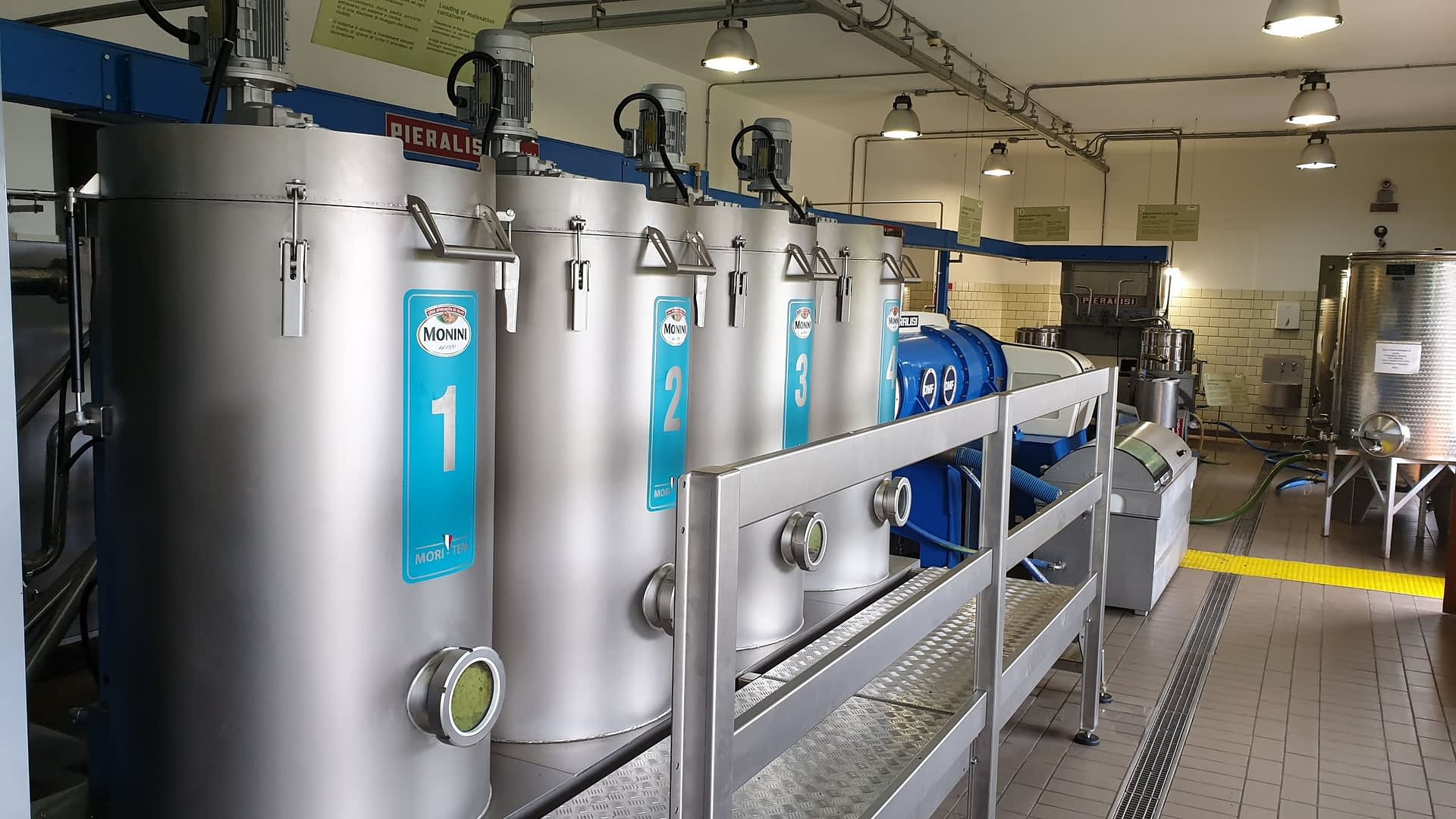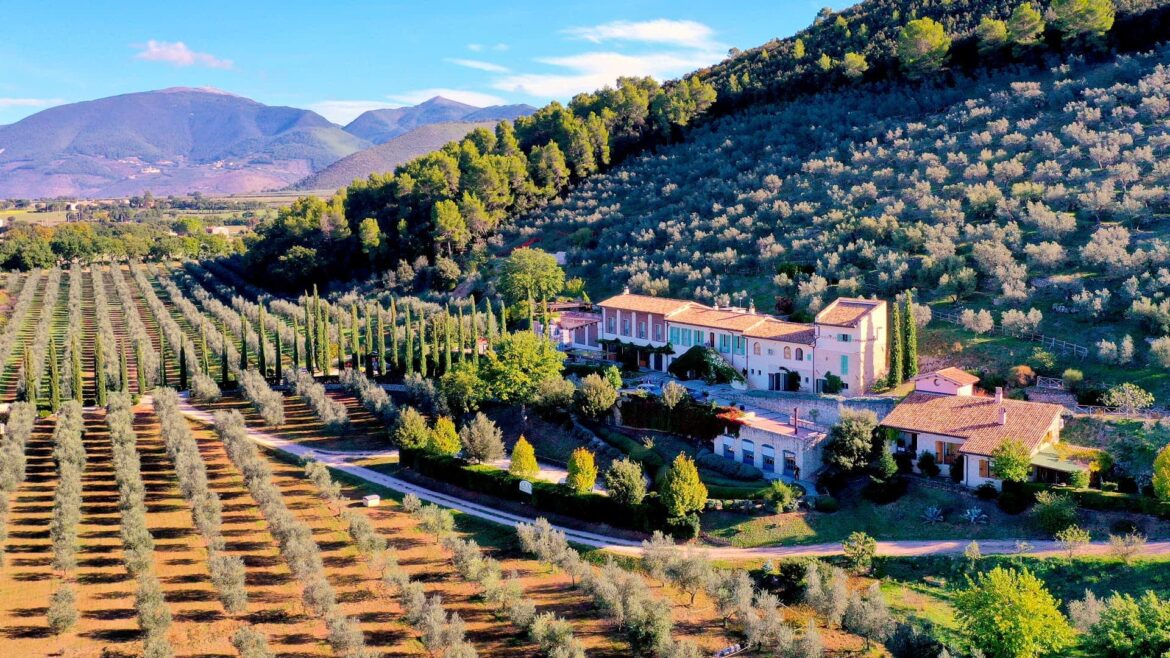Summary
Monini Corporation, one of the largest olive oil companies in Italy, produces 32 million liters of olive oil annually from their headquarters in the Umbrian hills. Despite challenges such as high fragmentation in the Italian olive production sector, the company is investing in modern olive orchards to maintain production levels and contribute to the production of entirely Italian extra virgin olive oil.
Surrounded by historic groves and well-known farms, Monini Corporation’s headquarters lies in the central Italian Umbrian hills.
From there, approximately 32 million liters of olive oil are produced annually, positioning Monini among the largest olive oil companies in the country.
Four of Monini’s extra virgin olive oils each secured a Gold Award at the 2025 NYIOOC World Olive Oil Competition.
“Today, about half of what is produced is exported,” Loreto Angelucci, Commercial Director Italy at Monini, told Olive Oil Times.
One of its flagship products, Gran Fruttato, a blend of only Italian extra virgin olive oils, has repeatedly won in New York over the years.
Since its founding in 1920, the Italian producer has thrived on its relationships with olive growers in Umbria.
Across decades of activity, it expanded its reach to many other regions, including Puglia, and to both small and large producers from other countries.
“The core activity of Monini is selecting the best quality olive oils and creating finished products that meet specific standards,” Angelucci said.
The parameters growers need to follow to be part of such a network are directly upheld by Zefferino Monini, President and CEO of Monini Corporation.
The continuously varying prices of the raw materials, such as olives, remain at the core of the ongoing negotiations between the company and the olive growers.
“Our President Zefferino is particularly attentive to raw material standards. He is willing to pay more for quality,” Angelucci stated.
“Zefferino also makes sure that quality is fairly rewarded,” he added, hinting at the challenges for many small growers in the country to obtain proper compensation for their efforts.
A significant challenge for Monini, and for the entire olive sector in the country, is the historically high level of fragmentation in Italian olive production.
“In Italy there are more than 4,000 mills. It is therefore very difficult to create an integrated supply chain,” Angelucci explained.
Those numbers reflect the scattered traditional olive production in the country, which is mainly based on small companies or family-run orchards.
“Historical orchards and even monumental olive trees are a marvel of nature, a cornerstone of Italian tradition. Some produce unique and beautiful olive oils,” Angelucci noted.
According to Angelucci, while traditional growing is unique and evocative, the olive oil market as a whole is undergoing rapid change, which has a significant impact on large players such as Monini.

“Think of Spain instead. There are large producers and large cooperatives with whom it is possible to establish structured relationships,” he added.
Added to the impact of the fragmentation, high taxation and the low efficiency of the traditional production systems weigh significantly on overall production, prices of the raw materials and, therefore, olive oil prices on the market.
Besides working with producers, Monini has more recently invested in modern high-density olive orchards to maintain production levels while reducing costs.
Over the last decades, Italy has seen its overall olive oil production sharply decline.
“In recent years we have started our own olive growing initiative as part of our sustainability plan launched in 2020,” noted Angelucci, referring to the company’s 2020 – 2030 sustainability strategy.
“We have planted approximately 800,000 new olive trees in what we call the Monini Forest, across different locations, investing in modern olive growing with innovative techniques that optimize processes,” Angelucci noted.
One of the goals of these investments is to contribute to the production of entirely Italian extra virgin olive oil.
“The demand for 100 percent Italian olive oil stays strong both inside Italy and abroad,” the Monini official remarked.
“Today, between 20 and 30 percent of our olive oil is 100 percent Italian,” Angelucci noted.
According to Monini’s official, the significant price gap between Italian olive oils and other-origin products on the market did not significantly deter consumers.
 (Photo: Monini)
(Photo: Monini)
“Even this year, despite the price gap, many continued to choose Italian. One liter of Italian extra virgin olive oil sells for €9.90, while E.U.-origin olive oils are promoted at €5 to €6,” Angelucci remarked.
“That happens abroad as well. Think of France, where we sell a lot of 100 percent Italian extra virgin olive oils,” the Monini manager said.
Among the reasons that drive Monini to seek new solutions, such as its high-density orchards, is the growing uncertainty surrounding climate and yields.
“Italian production is heavily concentrated in Puglia, which provides more than 55 percent of the total yields,” Angelucci explained.
“This makes the whole sector vulnerable. If drought hits that area, the consequences can be enormous,” he noted.
According to the latest Monini estimates, Italian production in 2025/2026 is expected to reach 300,000 tons, with more than 160,000 tons potentially coming from Puglia alone.
“In contrast, Spain and Portugal have invested a lot in modern olive growing systems that make their supply chains more stable and resilient,” Angelucci remarked.
Multiplied by the growing impacts of climate change, the high variability in yields reverberates on the price of raw materials.
“Those prices are highly unstable,” Angelucci noted. “In the last two years we have seen extreme fluctuations that make it very difficult to plan investments.”
“A wider adoption of modern olive growing models, as in Spain and Portugal, could bring more stability to the entire supply chain,” he added.
The shortage of Italian olive oils in the 2024/2025 season kept prices high.
“Olive oil from the 2024/2025 campaign is practically finished because there was so little of it,” Angelucci commented.
“For the next campaign, expectations are better and with more availability prices of raw materials and consumer prices should ease,” he estimated.
“In the end, everything always comes back to production. That is where the future of Italian olive oil will be decided,” Angelucci concluded.


Dining and Cooking